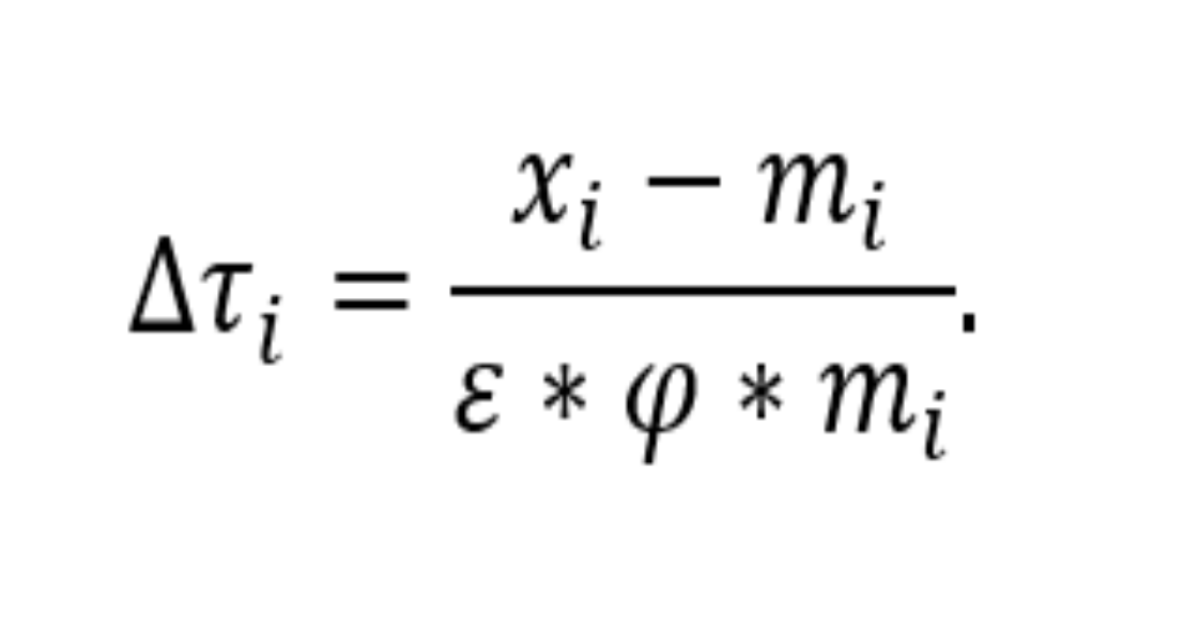President Trump and his team had said a wide array of practices would go into their calculations for reciprocal tariffs announced this week, ranging from existing duties and currency manipulation to value-added taxes and agricultural constraints.
But once the numbers were released Wednesday afternoon, it quickly became clear that how they came up with the differing rates for 185 different nations was actually much simpler.
In a statement published Wednesday night, Trump’s trade representative explained that methodology for tariffs was a formula that — at its core — calculated a ratio based on any given country’s trade surplus with the US. The data came from import and export data published by the U.S. Census Bureau for 2024.
The formula shown below uses a country’s trade surplus as the numerator — with “X” representing total exports for a given nation and “M” representing total imports.
That was then divided by total exports. In the below formula “ε” represents price elasticity for import demand and was set at 4. Meanwhile “φ” represents the elasticity of import prices and was set to 0.25 — effectively cancelling each other out.
This is the formula that Trump’s team says was used to calculate reciprocal tariffs. (Source: Office of the United States Trade Representative) · SOURCE: USTR
Trump touted that result on Wednesday at the White House and then divided it by two to produce the reciprocal tariff rate that will be levied on countries on April 9.
Trump termed the 50% discount as a “kind reciprocal” policy.
Some countries have trade surpluses with the US and — using the formula above — would come out with a negative rate.
But Trump didn’t announce any tariff lowering on Wednesday; instead he also announced a 10% baseline tariff on other nations who aren’t subject to additional duties from the formula.
All told the tariffs Trump announced Wednesday represent historic duties that Evercore ISI calculates will push that the new weighted-average tariff rate imposed by the US to 29% once they are in force next week — the highest in more than 100 years.
It all amounted to a dramatic move that, if it holds, would reorient the global trading system and represents the climax of Trump’s decades-long focus on trade deficits which he has long said are a measure of America being “ripped off.”
The USTR statement Wednesday night also noted that finding exact reciprocity “is complex, if not impossible” but added that the combined effects “can be proxied by computing the tariff level consistent with driving bilateral trade deficits to zero.”
In a call with reporters Wednesday, a senior administration official offered more insight into the approach, saying the calculation was made by Trump’s Council of Economic Advisors and was “based on the concept that the trade deficit that we have with any given country is the sum of all the unfair trade practices, the sum of all cheating.”
The methodology was a clear departure from how Trump often described his approach to reciprocity — as countering specific measures.
It was even as odds with Wednesday’s announcement where Trump held up a placard that listed the rates — derived from trade deficits — under a header listing them instead as “tariffs charged to the U.S.A. — including currency manipulation and trade barriers.”
President Donald Trump speaks during his trade announcement event in the Rose Garden at the White House on April 2. (Chip Somodevilla/Getty Images) · Chip Somodevilla via Getty Images
The calculation also flies in the face of decades of economic research long suggesting that a variety of factors can explain trade deficits between two nations beyond simply cheating.
The methodology immediately raised a variety of questions online. When Commerce Secretary Howard Lutnick was on Bloomberg Television Thursday morning, he was confronted with some of them questions.
He then confirmed that the underlying calculation was done by Trump’s Council of Economic Advisors but didn’t address the approach itself, saying the trade experts on Trump’s team have been “analyzing for decades all these different tools other economies use to hurt America.”
Ben Werschkul is a Washington correspondent for Yahoo Finance.
Read the latest financial and business news from Yahoo Finance
